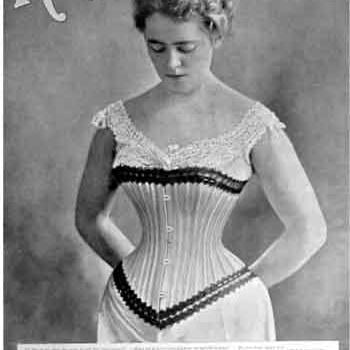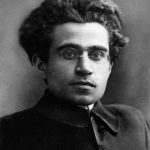Last week I described an “eating exercise” meant to encourage my students to think historically about the industrialization of food. It seemed to work well. Several of my students pointed out that not everything that is technologically “advanced” is better. One wrote, “Compared to historical eating, modern eating is over-processed, over-sized, and over-consumed. We eat very few things that come straight from the earth. And when we do eat them, they are usually doused with sweeteners or dressings.” Others contrasted historical notions of beauty and desirability. Being too thin in ancient Rome, wrote one, would be “considered sickly.” Such women would not have been considered “excellent candidates for motherhood.”

But perhaps the most striking insights of my students had to do with their own habits. Many of the students observed how passively they move about the cafeteria, falling into unhealthy patterns and succumbing to easy temptations. This is particularly pervasive in a college cafeteria, they said, where the smorgasbord of unhealthy options is pervasive. Consider some of these horrifying excerpts from their papers:
- “Two granola bars and a 12 oz. coke for breakfast is typical.”
- “I go to the cafeteria and have to walk by the cookie trays and friend chicken every day. Time after time I walk by those areas, each time my willpower wearing thinner. I rationalize in my head that I deserve it, that I have had a long and hard day studying. I would have to spend no money, sign no receipt; I wouldn’t even had to ask someone. Did the company that serves cafeteria food at Asbury put out the cookies in the center and most prominent position at the counter? Why is the fried chicken and hamburgers always in the main counters and nowhere else?”
- “I am obsessed with McDonalds. I eat there at least four times a week when I’m home, sometimes twice a day. Normally I drink Mountain Dew for breakfast, lunch, and dinner and I go through about 2 twelve packs a week just sitting around in my dorm room drinking it. So needless to say Pollan’s food rules were incredibly ridiculous and really hard for me to follow, but somehow I managed to survive two days of torture and come out on the other side alive and cherishing my McDonalds even more.”
- “The problem is a lack of good choices. Food is not labeled very well. There are not enough raw foods because processed foods are easy to prepare en masse and efficiently. There is no access to spices like cilantro, basil, maple syrup, ginger chili peppers. And there are too many temptations. With Blue Bell ice cream and Mountain Dew at all times calling my name it is super-hard to pick an apple and some water.”
But not all habits are unhealthy. Not all ritual is empty. Other students had habituated much healthier practices. One had grown up in a gluten-free and sugar-free family. Another ate so healthily that “sauces and condiments of almost any kind are inedible to me.” Yet another wrote, “I have not had a slice of pizza since I was five years old.” Many athletes in my course had adopted especially healthy habits of eating. They were the most articulate by far on the subject, having been exposed to health and nutrition instruction from their coaches.
The exercise itself seemed to prompt many students into more intentionally constructing healthier rituals. Most, after an initial shock, really enjoyed eating more intentionally and healthily. They felt better and more energized. Consider these excerpts:
- One student was outraged by the “healthy” bagels he had been eating. They “had well over five ingredients and included things such as xantham gum, dextrose, preservatives, and cellulose gum. Definitely not anything that would be in the average person’s pantry.” He discovered the same thing about Gatorade. “In between breakfast and lunch I drank an orange Gatorade, which I had never really figured to be that bad for you, but upon looking at the label I found that it contained ingredients such as monopotassium phosphate, modified food starch, and sodium citrate.” Then he discovered that the “healthy” granola bars he had been eating were “kind of like eating a candy bar.”
- Finding healthy alternatives was difficult for some. At first, they were “not appetizing or filling.” The cafeteria, wrote one, “can be a monster. Following these rules was just awful. I had no idea there could be a “diet” that would limit you from basically all food available in today’s society. I was only able to eat lettuce with vegetables.” She found herself “looking around at other students getting ice cream while I sat in front of my plain piece of lettuce. It is almost a conformity issue. I was the odd man out and I wanted to conform.”
- “It’s there,” said another, “but you have to make it yourself, which takes too much time. But if you look hard enough, you can find lots of fruit, stir-fry, yogurt with granola and honey.” And it was worth it. “It was like each day had a new burst of energy to it.” She enjoyed “a refreshed mood.” She didn’t feel “miserable or bloated” anymore.
- “I included chicken, boiled eggs, grape tomatoes, and cheese on my salad. I felt wonderful eating healthy while my friends chose things like pizza and creamy macaroni and cheese. I felt nice about it until I grabbed a chocolate chip cookie on the way out the door out of pure habit.” “I realized after my first day that eating healthy is all about getting into a routine and making it a priority.”
I think this student is exactly right. And I hope that she—and the rest of my students—begin to think more historically about where their food comes from and more intentionally about how they will position themselves into the complex food chains in modern America. Perhaps the noncognitive elements of this exercise can supplement the historical narratives about food production and ultimately habituate healthier and more thoughtful eating practices.
















